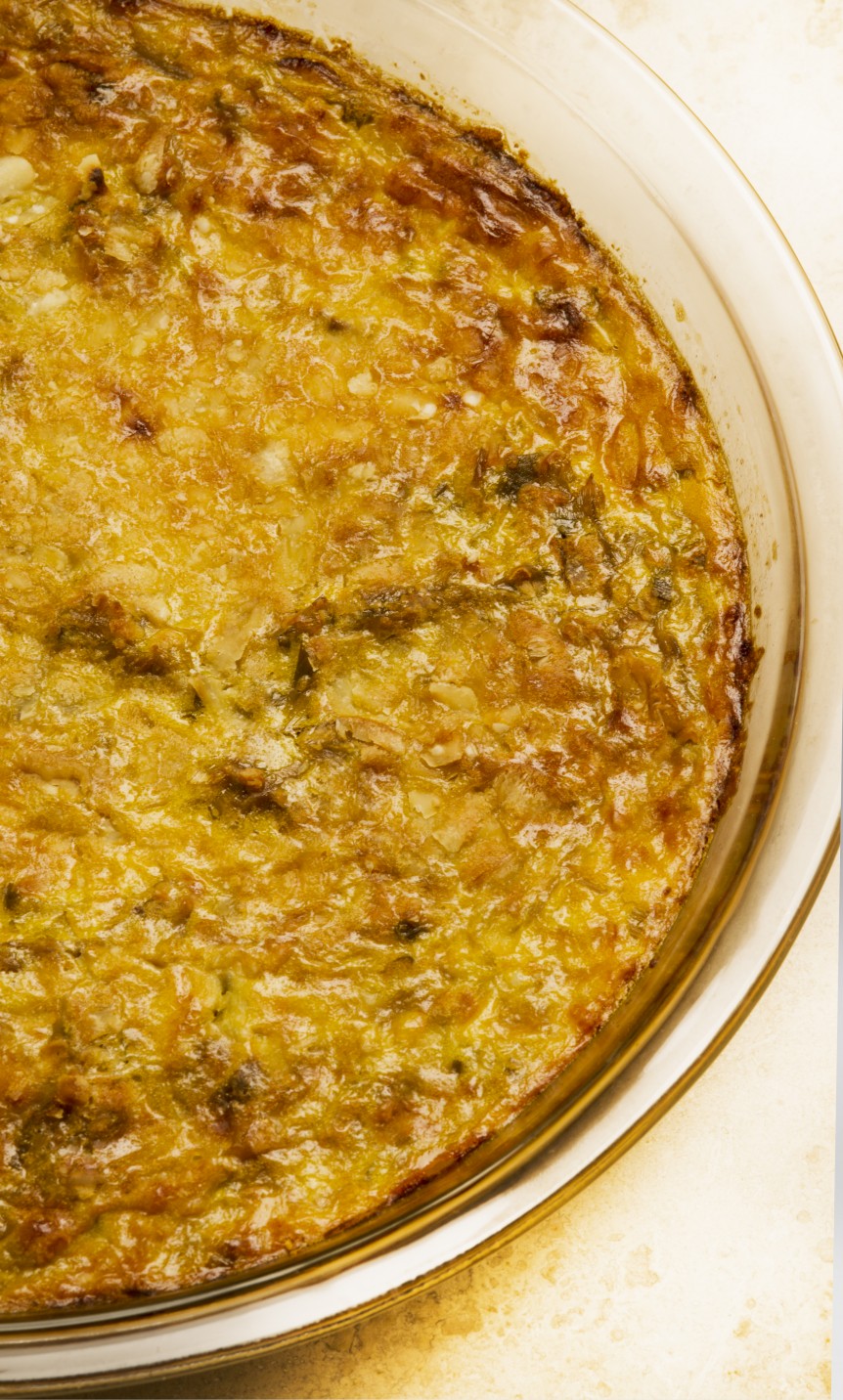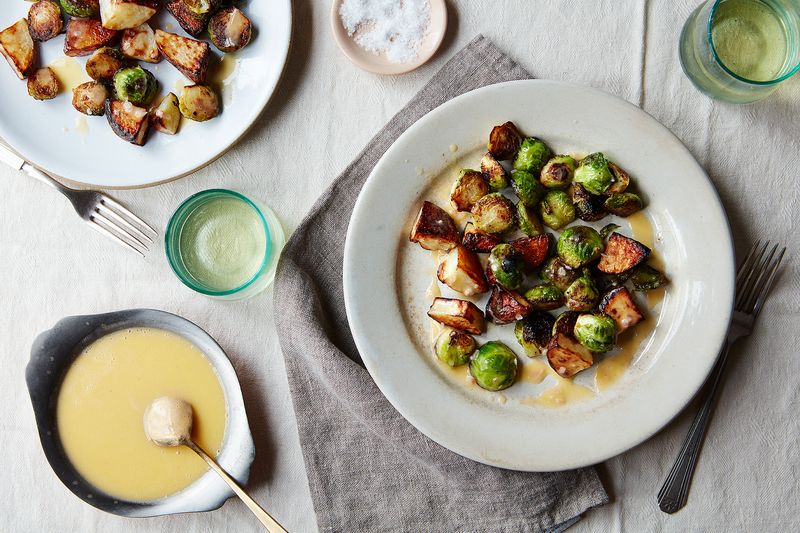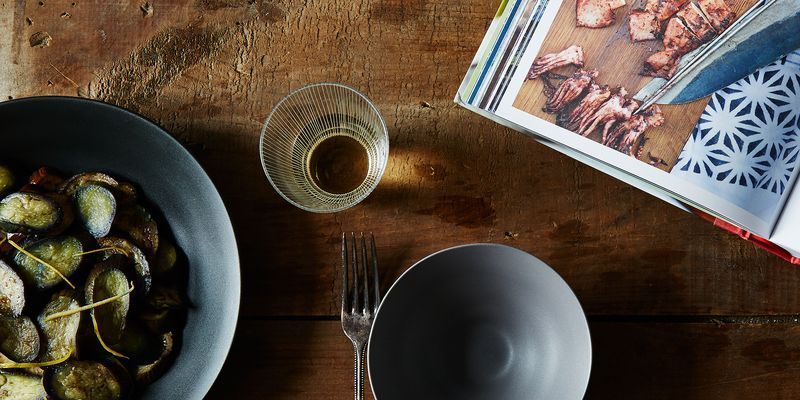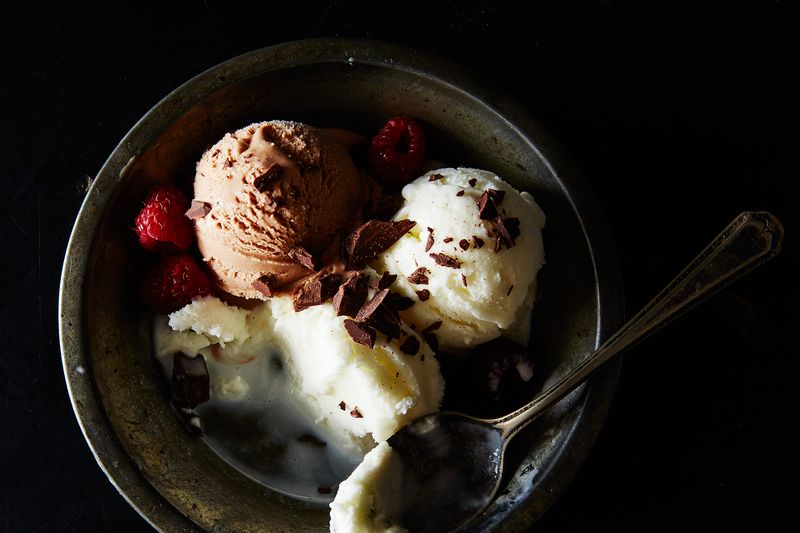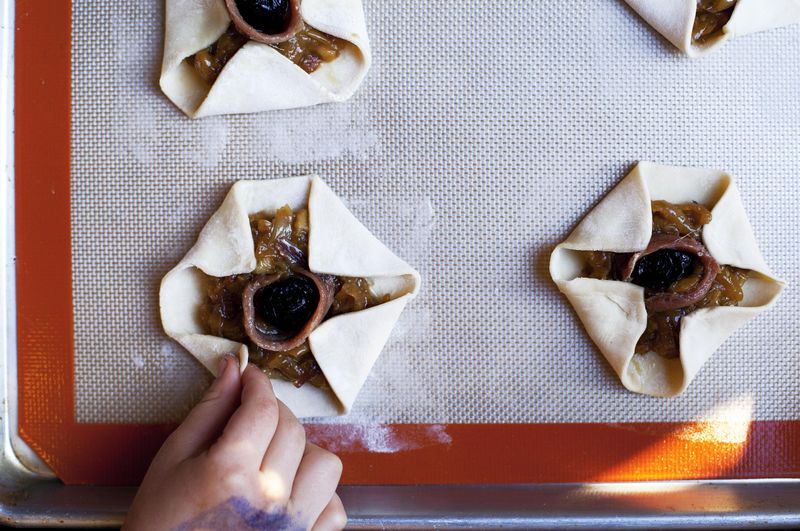For a link to Food 52, CLICK HERE
Some are so moved by the poetic nature of food and cooking that they’ve curated a whole cookbook inspired by the relationship. Cooking with the Muse, by Myra Kornfeld and Stephen Massimilla, explores poetry and cooking by pairing fantastic recipes with thematic verse. One of our favorites is a celebration of spring onions—perfect for this time of year. With a gorgeous recipe for a savory spring onion tart, there’s Naomi Shihab Nye’s poem, which starts, “When I think how far the onion has traveled / just to enter my stew today, I could kneel and praise / all small forgotten miracles…”
Hazelnuts, Rice, Deviled Eggs, and Other Poets’ Food-Muses
Have you ever had a bite of food that was so pure, so perfectly spiced, so decadent and delightful that you almost felt like you needed to commemorate it in some way? Have you ever read a food review that made you literally salivate? Food and poetry go together, in many sweet and savory ways. As National Poetry Month (April!) reaches full swing, we want to know what some of our favorite poets throughout history loved to eat, and how they shared that love through their art.
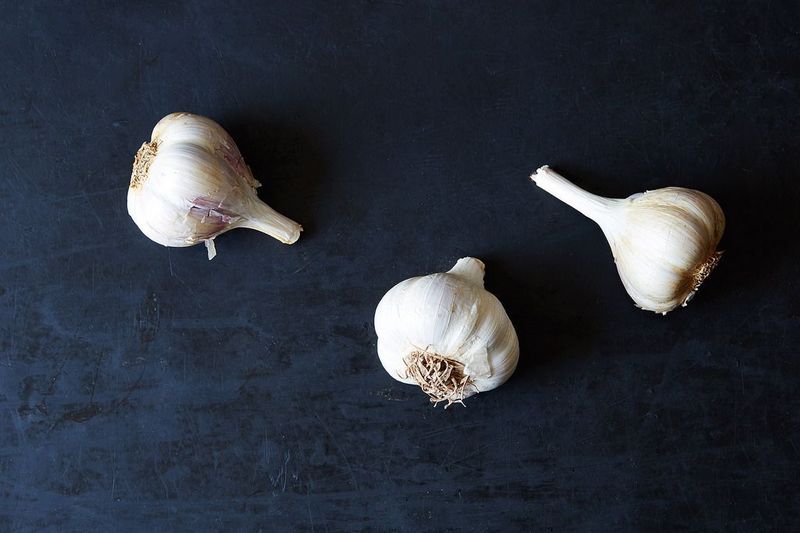
Let’s start with an easy one, William Shakespeare, who was very vocal about the foods he liked, and those he did not.
Give me hazelnuts
But thine garlic giveth not
Words ring sweet as meat
William Shakespeare made many references to popular food customs of his time, and the eras and regions in which his work was set. Hazelnuts were a super-popular snack in Tudor England, and he not only describes pretty ladies as hazelnuts, but also has fairies building carriages out of their shells. So resourceful. Oh—also, Shakespeare hates garlic. He thinks it stinks.
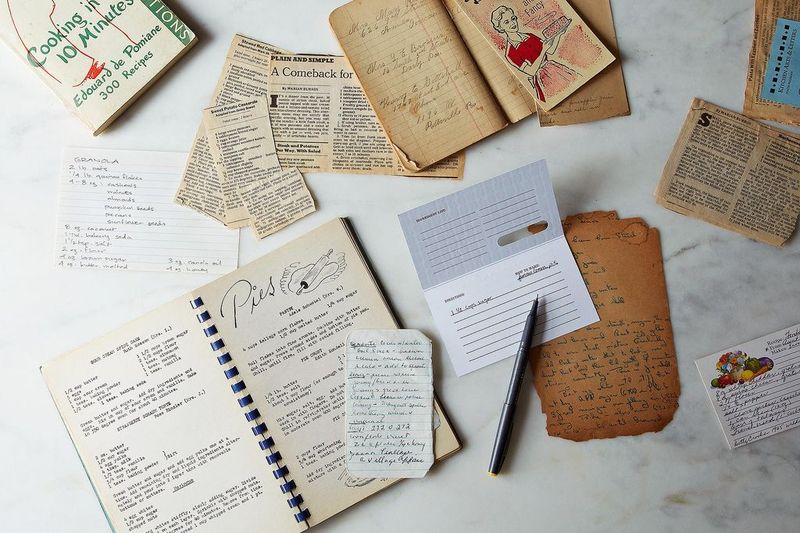
Another classic: Emily Dickinson. Everyone knows she was a lovely but sad recluse, but did you know she was a champion at baking? It seems like she must have been the sweetest lady ever, and actually made little baskets of treats for the neighborhood children? She lowered them out of her upstairs window on a rope so she could be adorable while never having to see anyone ever.
Is not a poem
Much like a cake recipe?
Scribbled bittersweet
Emily Dickinson loved baking and writing poems so much that when her family went through her papers, they found that she often started poems on recipe cards, while working in the kitchen. Who knows—maybe baking was actually her inspiration.
You know who else loved good home cooking? Langston Hughes, that’s who.
Why just have butter
When you can have butter sauce
On fresh garden greens?
Hughes didn’t exactly have it easy, growing up in Missouri at the beginning of the 1900s. And it was tough, too, when he and his dad lived in Mexico together. But he always remembered the “greens with corn dumplings” and “fresh peas and young onions right out of the garden,” and of course, “apple dumplings with butter sauce.” In Mexico he was all about “steaming-hot tortillas” and “roast duck stuffed with pears and turkey with mole sauce.” And, to really know how influential food was in the life and career of this wonderful poet, you’ll remember that he was first discovered by a literary big shot when he was a busboy in a restaurant in Washington D.C. Yes, that is true.
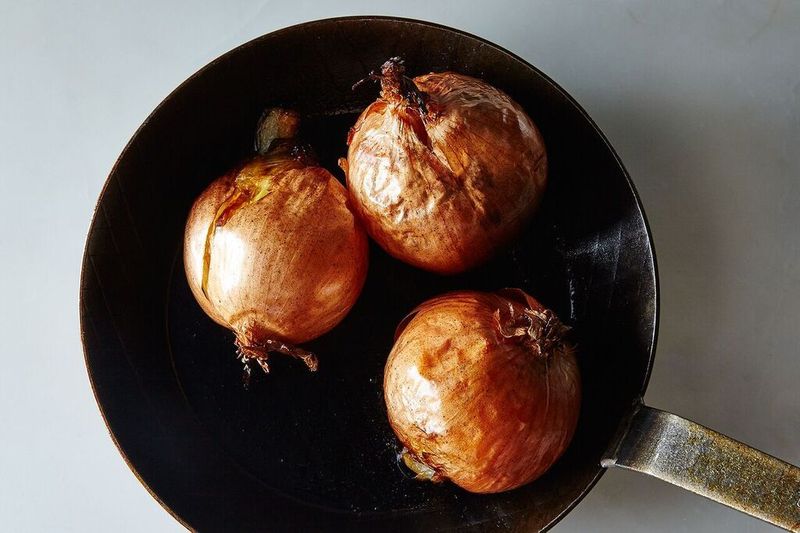
Now I can’t tell you what Pablo Neruda’s favorite food was, but I can tell you that he wrote glorious odes to many foods, including lemons, tomatoes, artichokes, salt, and An Onion. He had a lot of food love to share, as did Gertrude Stein, who wrote so much about so many strange food- and dining-related experiences that the following is merely a Table of Contents of one of her collections called, unsurprisingly, FOOD:
ROASTBEEF; MUTTON; BREAKFAST; SUGAR; CRANBERRIES; MILK; EGGS; APPLE; TAILS; LUNCH; CUPS; RHUBARB; SINGLE; FISH; CAKE; CUSTARD; POTATOES; ASPARAGUS; BUTTER; END OF SUMMER; SAUSAGES; CELERY; VEAL; VEGETABLE; COOKING; CHICKEN; PASTRY; CREAM; CUCUMBER; DINNER; DINING; EATING; SALAD; SAUCE; SALMON; ORANGE; COCOA; AND CLEAR SOUP AND ORANGES AND OAT-MEAL; SALAD DRESSING AND AN ARTICHOKE; A CENTRE IN A TABLE.
pablo neruda
at the table with ms. stein
dining and eating
And what about Japanese haiku poets? Did they have much to say about their most adored victuals? Turns out Basho, the quintessential 17th-century haiku master, was kiiiind of a foodie. And by that I mean he basically lived off of rice and rice alone. He wrote,
spring begins—
in a new year,
ten quarts of old rice
Oh, and there was one time his rich friend gave him some fish (or something) and all he could think about was how the color reminded him of birdsong:
maybe the bush warbler
sang too much
this skipjack
But let’s talk about some people who are still around today, still making poems and eating snacks like the bunch of hungry poets they are. We asked Anton Yakovlev, accomplished poet and most recent winner of our Haiku Duel, what foods inspired him, and he said, somewhat surprisingly, lychee frozen yogurt.
Icy pink eyeballs
Peer from styrofoam igloos
In a spoon panic
In his poem “Tundra,” the narrator “trades lychee custards” with his best friend, who may or may not be Death. He has another poem where a bunch of grinning tigers are sitting in the bleachers at a soccer game, feasting on frozen yogurt. Which totally makes sense to us, and makes us want to read more of his poems over a nice frosty treat.
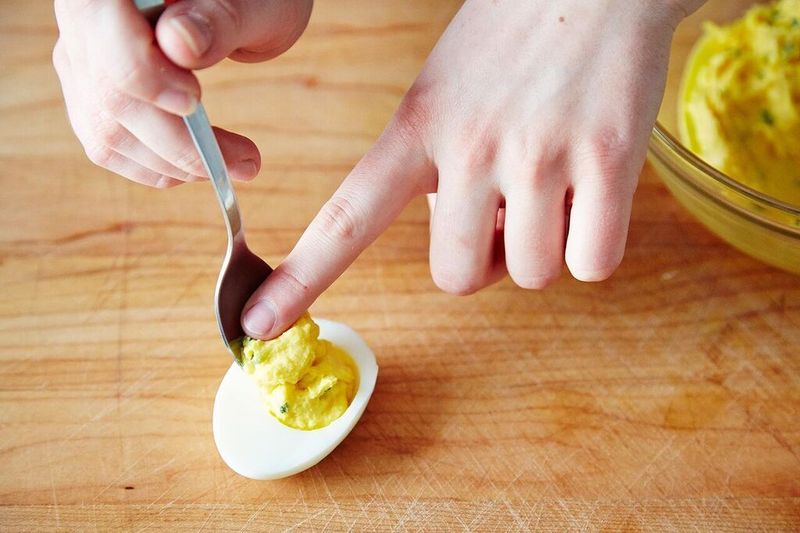
Renowned spoken word poet Alysia Harris didn’t want to commit to just one food for forever and ever amen, but she had wonderful things to say about her preferred style of deviled egg: Southern. “Not no northern this is chic so I’m gonna put caviar on them deviled eggs… I mean spicy hot with cumin and paprika, radish or jalapeños, mustard and vinegar, with maple cut bacon on top deviled eggs. Yes Lord!” And with that description, we promptly stopped writing this article and made a deviled egg mountain. We dedicate this haiku to her:
you, the egg woman.
you, in striking shades of gold.
undone and rebuilt.
Not only does she love deviled eggs, but she also loves the process of making them: “I like that you take the inside out and then put it back in again. It’s like being undone and reconstituted, being remade. It’s like a collaborative project with the food.” And the result is a sensory feast, a “beautiful sensual delicate food” with the yolks in “the most striking color on the planet.”
Some are so moved by the poetic nature of food and cooking that they’ve curated a whole cookbook inspired by the relationship. Cooking with the Muse, by Myra Kornfeld and Stephen Massimilla, explores poetry and cooking by pairing fantastic recipes with thematic verse. One of our favorites is a celebration of spring onions—perfect for this time of year. With a gorgeous recipe for a savory spring onion tart, there’s Naomi Shihab Nye’s poem starts, “When I think how far the onion has traveled / just to enter my stew today, I could kneel and praise / all small forgotten miracles…”
you, humble diamond
in sand, under pressure grown
to flavor all things
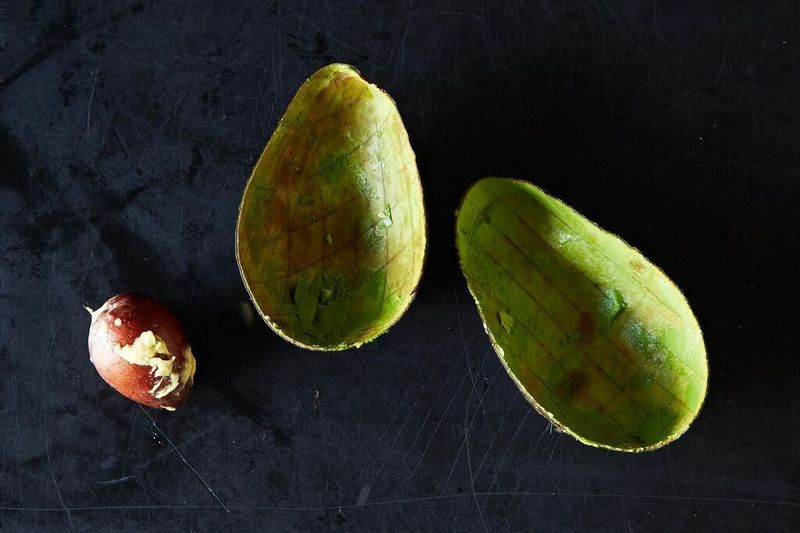
I could go on for days about this great confluence, this inevitable pairing, this tasty diatribe, but alas, I have poems of my own to write, and am feeling a bit peckish myself. And if you’re wondering what food inspires me, take a guess based on this haiku:
an alligator
conversant with eggs and pears
green silk, peeled and carved
Feeling inspired yourself? Write an ode to your food muse in the comments.
